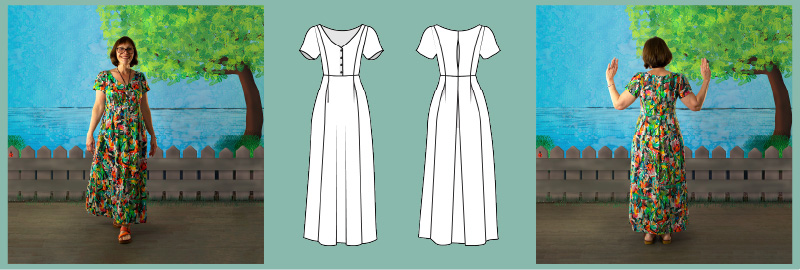My Patternmaking Story
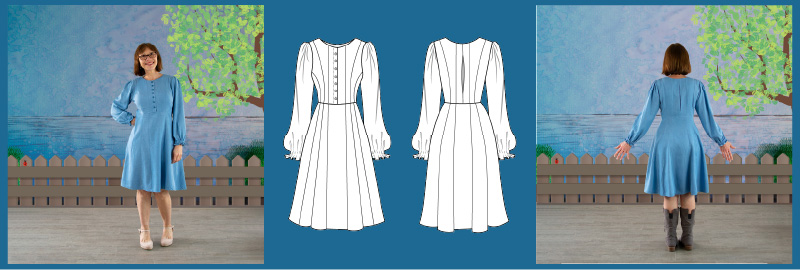
The story of how I started patternmaking, how I ended up devising my own systems for drafting the Bodice Block and the Pants Block and how I got to this website - is very long story and so Ihave split it up into 10 Parts. These parts used to be on different pages on my website, but now they are all on this page. Click on the links to be taken directly down to the different parts. Or start at the beginning and read right on through to the bottom of the page.
- Part 1: The Very Beginning
- Part 2: Sewing Class
- Part 3: Patterns From Clothes?
- Part 4: Patternmaking Classes
- Part 5: Another Block Making Course
- Part 6: Outsourcing
- Part 7: Community College Block Making Course
- Part 8: Esmod Block Making Course
- Part 9: Another Dressmaker, Another Class
- Part 10: On My Own
Part 1: The Very Beginning
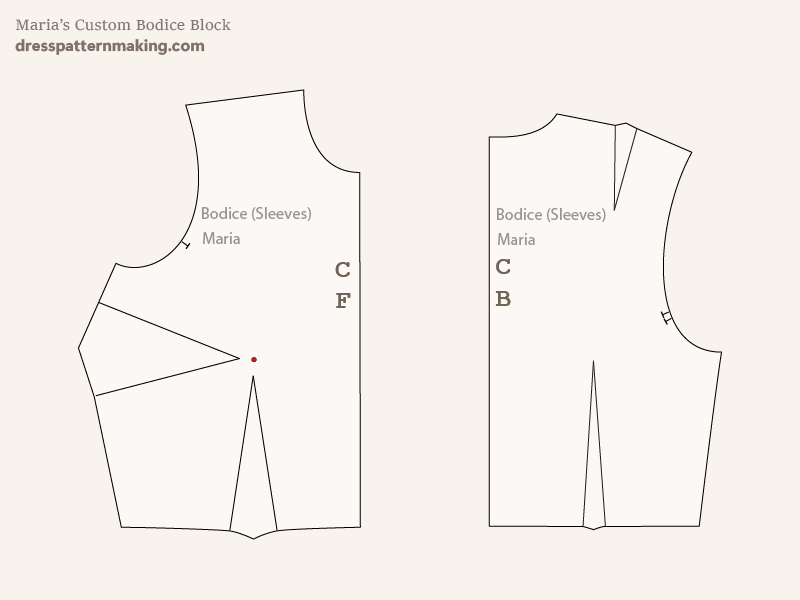
It took you HOW long?
It took me years to make myself a well-fitting block - or rather a block from which I could consistently make well-fitting clothes. From my first attempt at making myself a personalized bodice block to the final block I now took (which is the block I use to make the dresses you see throughout My Story).....seven years. To be clear on this: the actual creation of the block itself not a problem, but the resultant 2D shape that was created (with my measurements and a set of instructions) did not result in a good flat representation of my 3D figure. When I took that flat block and made a 3D shape from fabric, it didn't fit well.
When I say it took me seven years, of course that's not all I was doing. I didn't spend eight hours a day for seven years doing only that. During those seven years I also worked full-time, did some work-related courses, moved house five times, renovated (re-modeled) two houses (though not the actual physical work, but still the process took up a lot of time!), moved interstate once, got engaged and married, did at least one hour of exercise per day (usually more), sang in a choir, was in an out of hospital on a number of occasions (then convalescing) learned to play the guitar, studied web design and graphic design, learned to use Illustrator, InDesign, and many other software programs (did thousands of hours of tutorials on Lynda.com), took sewing classes, made some patterns, made some clothes..... . Though that list is not in any kind of order. Oh, and how could I forget? Attended Patternmaking classes for 3 hours a week for two years.
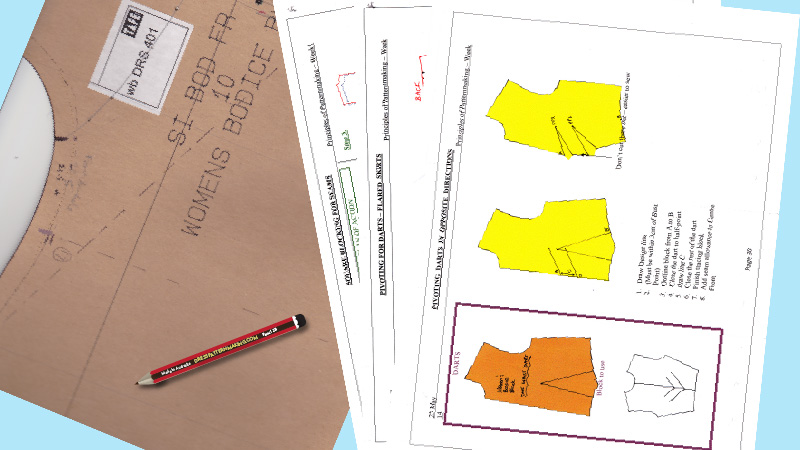
Although I studied Patternmaking at TAFE, making personalized blocks were not part of the curriculum; we used Standard Industry Blocks which we purchased from the TAFE shop to make our patterns in class. Most people in the class weren't interested in making their own personalized blocks, most of them worked in the fashion industry and the patternmaking they did was for that purpose. They therefore used some kind of industry blocks; either ones their fashion house had created, or for those planning on starting their own fashion line, using some standard blocks like the TAFE ones.
My block-making attempts consisted of working on it every so often for a few weeks, then I'd put it aside and come back to it months or even a year later. In the meantime I did make some clothes with the not-quite-right blocks I had made; and they were good enough, and fit me better and were more comfortable than ready to wear clothing. But they still weren't quite right. The overriding problem was that I just couldn't translate the flat block I was making into a 3D shape in my head to understand what was wrong. I also had no history of sewing and making alternations, and I had started this all at the age of 40. I would try in my spare time, for a week or so, then put it aside as I had other things happening that took priority. I just came back to it every so often - more often I think when I took annual leave.
I struggled also because I had no-one to turn to for help (no friends or family who did any sewing or knew anything about patternmaking), and so I just worked at it (and worked at it, and left it for a couple of months, and came back and worked at it) until I figured it out. I wouldn't even want to hazard a guess as to how many times I remade my Bodice Block to get the fit right. (The reason I didn't attend a sewing class was because I didn't want to continue making ill-fitting clothes with Commercial Patterns. If you read my full story I cover that!).
Having said that I had no-one to help, I did try to get help - numerous time; it just didn't work out too well. (You can read about those attempts in next parts of my story - from Parts 1 to 10).
Although I bought text-book after textbook, there were things that I just couldn't get my head around. It took me a while to understand that most block making instructions have some assumptions built in them, and I could not see those assumptions.
Why didn't you just work on your toile?
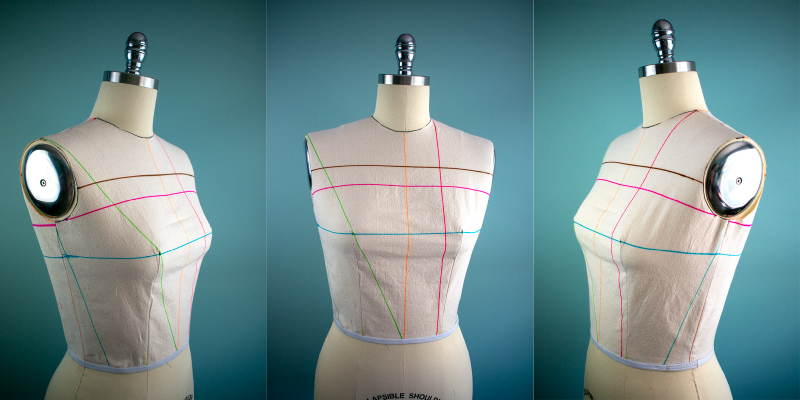
The presumption is, from the vantage point of the authors block making instructions, is that that you make a block according to their directions, then make a toile. If the toile doesn't fit right, you make adjustments to it, then amend your block to reflect those changes.
That's well and fine, but what if you just don't understand where and why the toile isn't fitting right, and/or how to make the necessary adjustments to the toile and then to the block? There is confusion in that fact that if I made it to my measurements, why does it feel like it's choking me, seem to be riding backwards, pulling across the chest, gaping in the armhole and too short in the front? It just didn't make sense to me. And since there were so many things wrong - where do you begin making changes? I would make one change to fix one thing, but it would affect something else elsewhere. I tried and tried again. The other difficulty is that it's very hard to fit yourself by yourself.
I tried to figure out one issue at a time, but it often seemed I was going around in circles; I'd solve one problem but create another.
Let me stress something here; many people may not have the problems I had. The closer you are to the Standard Figure, the easier it is to make a block that fits well without too many issues. The more ways your figure differs to the standard figure (in my case, for the Bodice Block: square shoulders, rounded upper back, large bust cup (with a resulting low bust), forward sloping shoulders....), the more difficult it may be to make a block that fits well. You also may not have a problem for other reasons such as; you have good visual-spatial skills and can convert that 2D flat block into a 3D figure in your head, so you can easily see where the problems lay, and how to make the adjustment on the flat 2D pattern.
More than a well-fitting block
As time went by, I wanted more than just a well-fitting block. I wanted to understand why it was so difficult for me to make a well-fitting block. I wanted to really understand each of the block-making systems and what, if any, the assumptions were. If there were no assumptions, what was going wrong? I thought at the minimum it must be possible to have instructions that included allowing for a large bust cup, rather than making a block then making the large-bust cup adjustment.
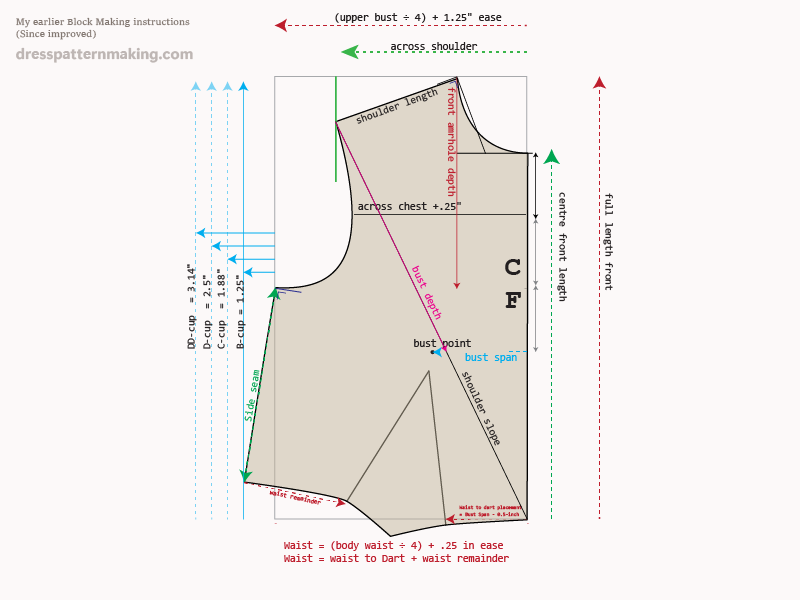
I also thought that there must be others like me, to whom this didn't come naturally, who could do with some explanations about some of the basic concepts that I struggled with. I thought that each thing that I learned - each "ah ha" moment, could be written up and so save someone else having to struggle with it. I thought that if ever I understood it all really well, then I'd make a website and pass on the information.
So now I'll go back to the very beginning, which is actually Part 2: Sewing Class.
Click here to go back to the top of the page.
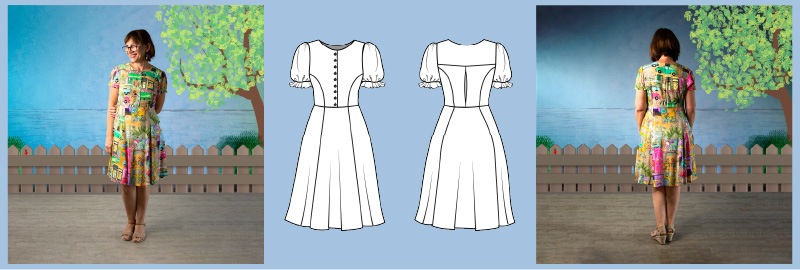
Part 2: Sewing Class
"I'll just make my own clothes."
At the end of 2002, at the age of 38, after a lifetime of a lot of ill-fitting and uncomfortable clothing (at least since puberty), I decided that I had to do something about it. Given that I might well have another thirty-eight (or more) years left ahead of me, and that I didn't want to spend those years in uncomfortable clothing, I decided I would.... learn to make my own clothes.
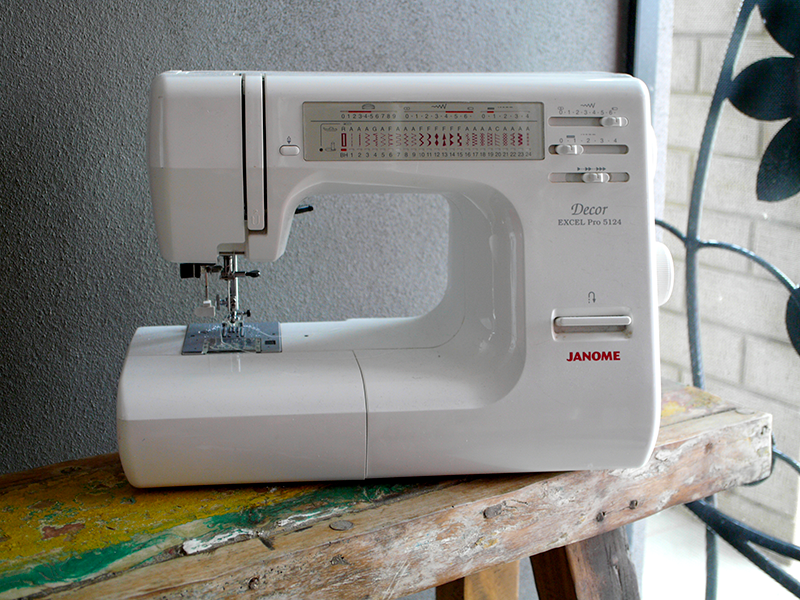
With my new Janome sewing machine in hand, I turned up to a Community College Sewing class. I talked to the teacher and told her about my problems. She assured me we'd make a garment that fit. She measured my bust (98cm | 38.5 inches) and waist (71cm | 28 inches) and said I needed to buy a Size 16 Commercial Pattern (to fit my bust, although I was usually a size 12 or 14 in clothing) - and she would change the waist.
I bought a pattern for a simple dress and, as she said she would, she made changes to the pattern, before I cut out the fabric, so that the waist would be a better fit. I sewed up the dress and had it finished by the last class.
It looked dreadful.
I can't begin to tell you how YUK it looked. To say it didn't fit doesn't begin to describe the magnitude of the problem. It was so completely WRONG! It wasn't just one thing, it was wrong everywhere. Completely unwearable. The teacher was quite shocked at how badly it fitted, and seemed apologetic that we hadn't had time to do more fitting. When I got home the dress went into the bin.
The Standard (or Ideal) Figure
To some extent I had realized that commercial patterns were made for the same standard figure that ready-to-wear clothing is made for. But I had assumed that making adjustments would be kind of straight forward. I had also not really considered all the problems. I didn't know what I didn't know. Sure, you can make changes to that pattern (the teacher did, to adjust for my waist), but how do you know what (other) changes to make? If your figure is just totally unlike the Standard Figure and you need to change the pattern four or five or six places, where do you begin?
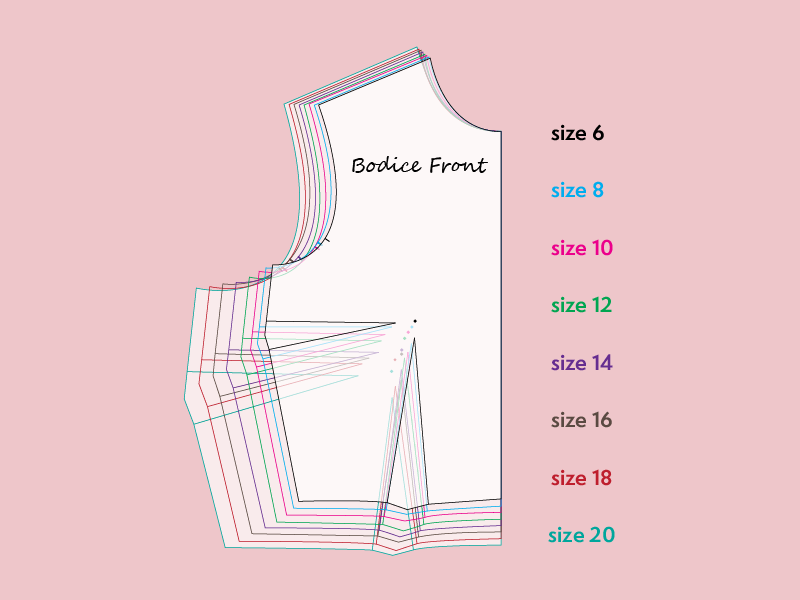
Even if you find it difficult to find shop garments to fit, you have the option of going to lots of different stores, and trying on lots of different things, and then only purchasing things that fit to some extent. You wouldn't buy something that didn't fit in any shape or form. Once you have cut out a dress and sewn it and it's completely wrong, you don't have the option of getting your money back. It's money down the drain.
Too Many Fitting Issues
Given the benefit of hindsight, and the skills I have acquired in the intervening time, I can show the fitting issues I had with that Vogue Size16 pattern by comparing it to my block.
In this first image, I have created an approximation of what would be the base of the Vogue Pattern (i.e. the block that would be used to make Vogue patterns). It has been created referring to a Vogue Size 16 Fitting Shell and confirmed by referring it to a few Vogue patterns.
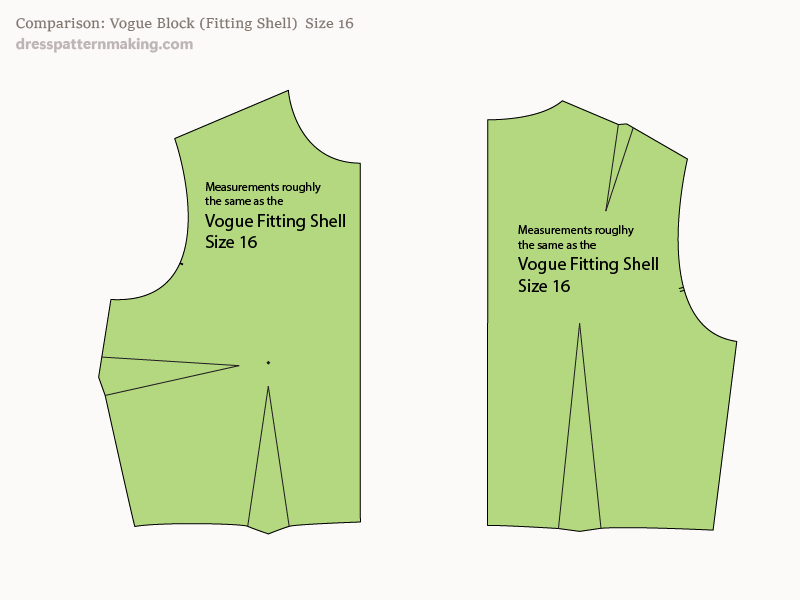
In this next image, I have superimposed my block (in white) on top to clearly see where the differences are. I have lined them up at the shoulder tips because that is how the a garmen made with a Vogue pattern would sit on my body. (And explains why I always felt high neck garments 'choked' me and slipped backwards).
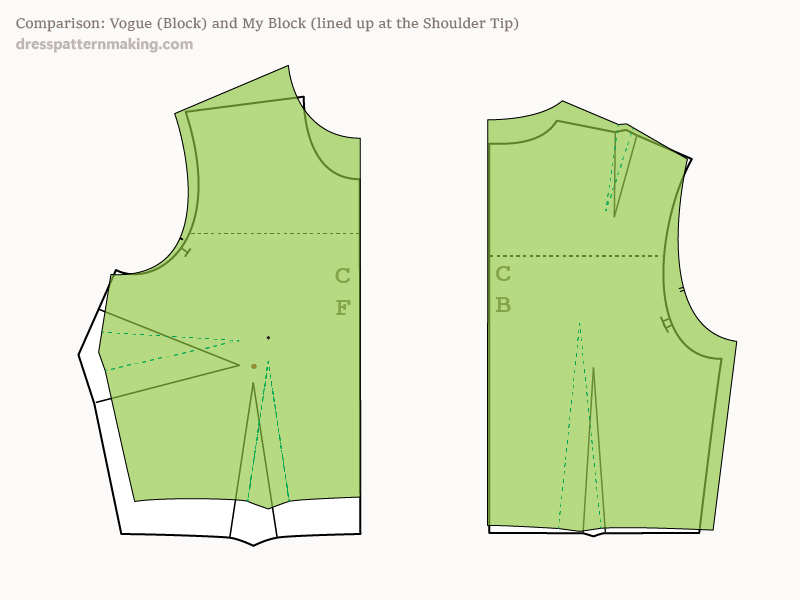
In addition to the initial waist problem (which the teacher made adjustments for), here are the issues (that were not adjusted for): Too big in the neck, the shoulders are too wide, too big in the back, too big across the upper back, the shoulder slope is wrong (very wrong!), AND bust cup is too small (yes, even though the width is there, it won't fit well in the bust). The center front length and the center back lengths are too long....
The blocks are lined up at the shoulder tip; this is because in real life, that shoulder tip can't be sitting below my shoulders, and this gives an indication of how the garment would sit on me - i.e. the CF neck would be too high, etc.
I really don't know that my sewing teacher would have been able to help me make all the adjustments needed while still teaching about 10 or more students sewing.
So....
Trying Again, but Not Succeeding
The sewing class was in the last term of the year, and there were no more classes for about six weeks over Christmas. Over the break I tried making a few more of garments by myself, trying to make adjustments afterwards. All those efforts came to nothing. I was so disappointed and frustrated - learning to sew wasn't that hard, but getting the garment to fit seemed impossible.
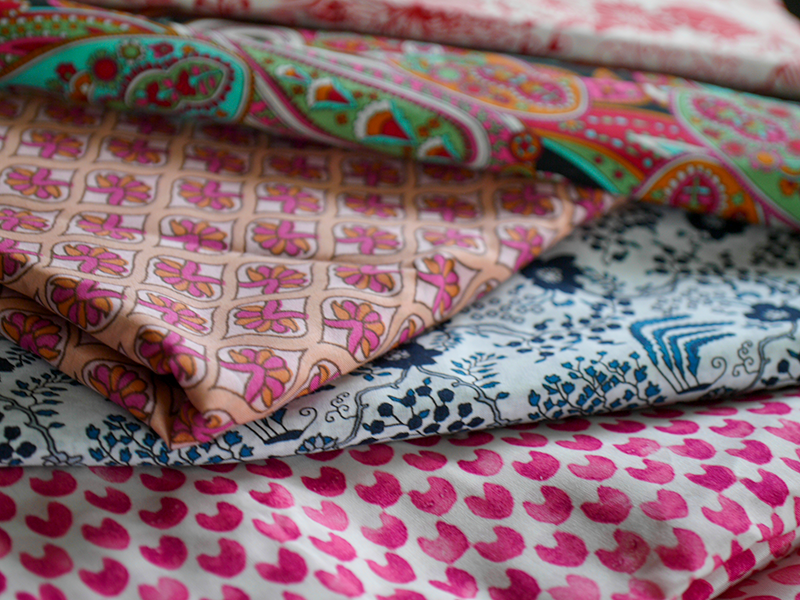
I planned on signing up for the next sewing class, hoping that the teacher might help me learn how to make adjustments to patterns, but then I started a Certificate IV in Assessment & Workplace Training in early 2003 and just didn't have the time. The next time I tried to sign up, the class was full.
In the meantime, I did try to sew a couple of more things, and then I had a thought. Why not try cutting up an old top that had fit me quite well, and try and make a pattern from that? Which is the next part of my story: trying to make a pattern from deconstructing a garment.
Click here to go back to the top of the page.
Part 3: Patterns from Clothes?
What happened next?
I tried various times to make a garment from a commercial pattern, then make adjustments to fit, but it was completely beyond me. I was waiting for an upcoming sewing class to start - I had missed out on a couple due to other things happening in my life.
So.... I decided to unpick a top and see if I could make a pattern. It kind of worked... but kind of didn't. Here is the photo of the top I made. (Unfortunately, I don't have a photo of the original top - I had already cut the top up to deconstruct it for making the pattern by the time I thought of doing that.)
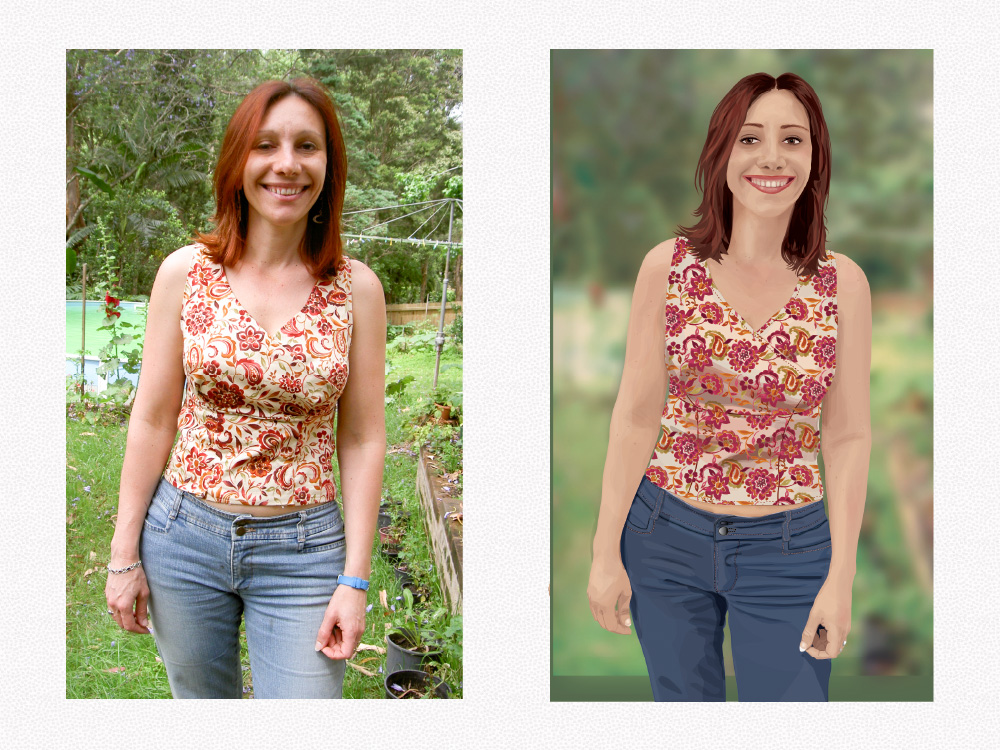
When I first sewed the top up, directly from the pattern (that I had made from the top), it wasn't right, it didn't fit very well, but..... I just kept making adjustment to the inside seams until it looked OK on the outside. Unfortunately, by the time I'd got the fit right, the inside looked a complete mess.
Then I was in a bit of a quandary. I quite liked the top; even though the inside looked like a dog's breakfast, it fit me and was wearable. The problem was trying to get the changes I made back onto the pattern - I couldn't see how to translate the changes I had made back to the pattern pieces. My only option was... cutting it up and trying to get those changes onto the pattern pieces.
I did .... but the next top didn't work out well at all.
Serendipity
So I wore this top - this top I that made from the pattern that I made from the top I had cut up, which had been made from a pattern from cutting a previous top - to a social event. I really struggled with the question of whether to wear it or not. It didn't fit right, it didn't fit as well as the first one, and I thought it looked odd. But I decided to wear it the once and then throw it away (AND to give up on that idea of making patterns from clothes!).
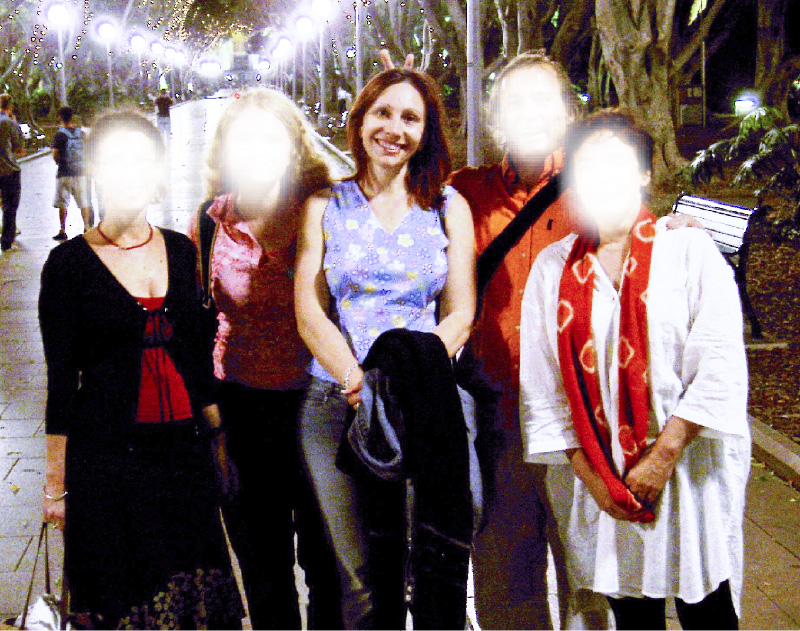
It was a good thing I wore the top because it led to a conversation that led to patternmaking.
A friend/acquaintance at the gathering told she liked my top (I don't actually believe her, I think she was just being nice!). So I told her the whole story of wanting to sew to make better fitting clothes, and the challenges I had encountered, including the cutting up of a top to make a pattern.
Luckily I was talking to the right person at the right time. Michelle, having her own fitting issues, also sewed and made her own clothes. (Which I did not know about her - it had never come up in our previous conversations!). She didn't use commercial patterns; she made her own. She had done a patternmaking course at a Community College** where everyone made themselves a set of customized blocks.
So she had a set of blocks and used them to make her own clothes. The skirt she was wearing that night (trendy and arty, and it fit her really well!) she had designed and made from her own block.
I was astounded, impressed, amazed, thrilled, excited... and any other number of things, all at once.
Wow! Patternmaking? It's possible to learn to make your own patterns, using a basic pattern made that fits your figure? I was over the moon. (**The bit about a 10 week Community College course didn't register with me at the time. I only know this in hindsight. The only thing that I heard at the time was "patternmaking course.").
So the next day I searched for a patternmaking class. That's the next part of my story.
Click here to go back to the top of the page.
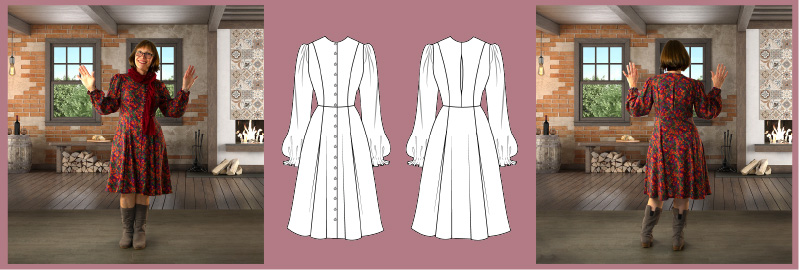
Part 4: Patternmaking Classes
I was so excited!
When I did a (Google) search (back in December 2003) on patternmaking in Sydney, all that came up was a TAFE course: The Principles of Patternmaking. It was one of the subjects in the Certificate IV in Fashion Technology. The Principles of Patternmaking consisted of one three-hour class per week, one night a week, for one year.
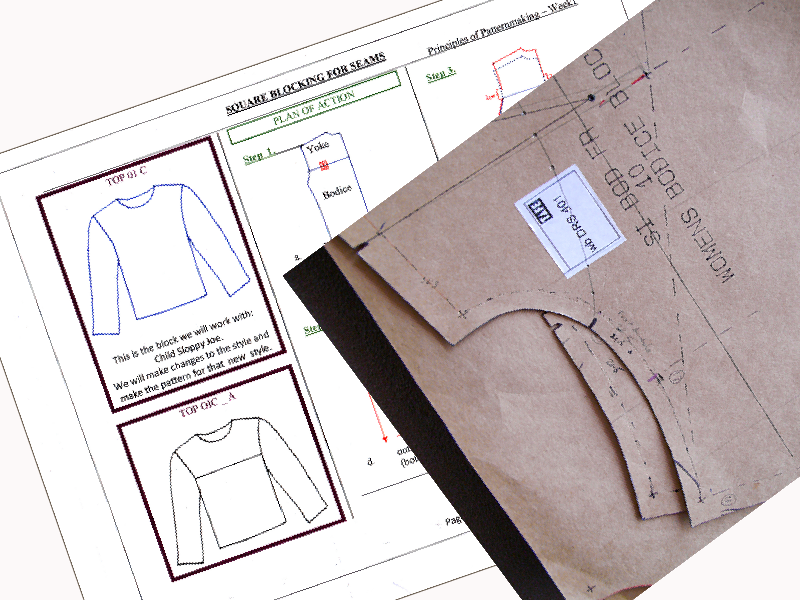
So I phoned as soon as I could (had to wait until January, when TAFE opened again) and got the information about enrollment day, and I turned up. There was a long line down the hall for enrolling in the Fashion Technology subjects. A long line before me, and about 20 or 30 people after me. It was a case of first in, first served. I was the second-last one to get into Patternmaking, almost everyone behind me in the line was sent away (try again next year!).
Then classes started, and I turned up to find that all the other people in the class were in some way involved in the fashion industry; they worked in the fashion industry or they wanted to work in the fashion industry. Some had jobs on the cutting-room floor of some major labels, others wanted to design their own clothes to start their own fashion labels. I felt a bit like a fish out of water. I felt a bit stupid really, like someone was going to say I shouldn't be there, and send me away.
However, from the first class, I loved it! I was fascinated and amazed that I could learn this skill. (And at that time it only cost about $250 a year for TAFE studies, regardless of what qualification or how many subjects you did!). I did occur to me that this was not the kind of class that my friend had done, but I was very hazy about any of the details she had mentioned. At the time of starting these classes, I didn't realize she did a 10 week Community College course - I only released that much later.
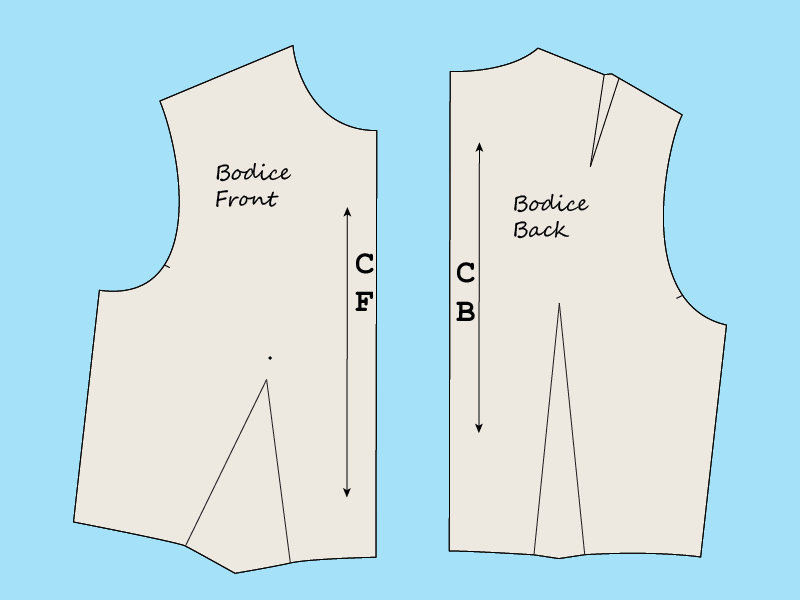
Did I make a mistake?
In about the third or fourth week I asked my teacher when we would make our own customized blocks. The answer was... never. This was a fashion course, directed at the fashion industry, it wasn't about personalized blocks. We wouldn't be learning to make blocks at all, actually. We would use standard industry blocks. TAFE had their own blocks, and we had to purchase a set for use in class.
I was disappointed, but not at all dismayed. Not even the least bit fazed. I figured that as I learned skills in patternmaking, I could eventually make my own block. I decided that for the moment I would just keep on learning patternmaking, and concentrate on that. I also had a lot of other things going on in my life, and if I had to wait another year or two to make my own clothes... well, at least in a year or two I would be able to do that. What was the alternative, give up? Anyway, I loved the patternmaking classes, I loved learning the skills, there was no way I was going to stop.
The other thing I figured was this: Michelle had done a ten-week community college course and made herself a set of blocks, but there was no way that ten-week course would have given her all the knowledge that the one-year course I was doing, and the second year course that followed it - Block & Pattern Modification would give me. So what if I did it the other way around? What if I learned patternmaking first, then make my own block sometime down the track? Meh! I was up for it.
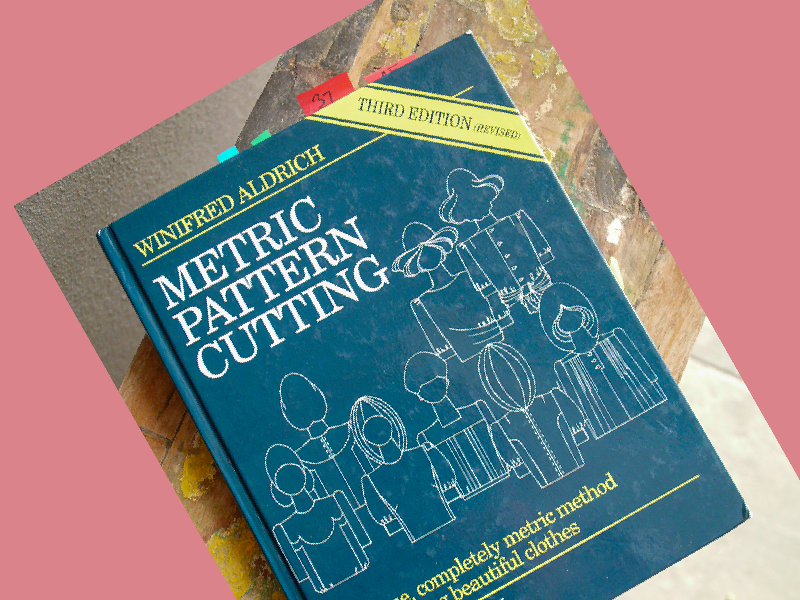
Asking my teacher for Block Making Instructions
So, eventually, past the middle of that year, I asked my teacher how I could go about making my blocks myself. Since block-making wasn't going to be covered in class, I was hoping she could suggest how I could go about it. My teacher suggested a textbook: Metric Pattern Cutting by Winifred Aldrich. I think I had to order it; she arranged the order and I waited for it impatiently.
Boy, was I excited when I got it. I had four or five weeks leave from work starting soon, and I planned to work on the block and patterns in the first few weeks; I had a trip planned for the last two weeks.
Since I was using my own unique measurement, I was sure it would fit really well. THEN I could start making myself some patterns, and some more clothes.
The Disappointment
Yeah, well.... I'm not sure you can begin to imagine my disappointment when it turned our so wrong!.
The first image is the block that I created using Aldrich directions using my own personal measurements.

Here is that block superimposed on my block (white shapes), lined up at the shoulder tips. It is obvious how different the shapes are but what may not be so obvious (if you don't have some knowledge about darts and sewing) is how porly it would fit in the bust. Despite the width of the front block (it's wider than my block), it was still too small in the bust.
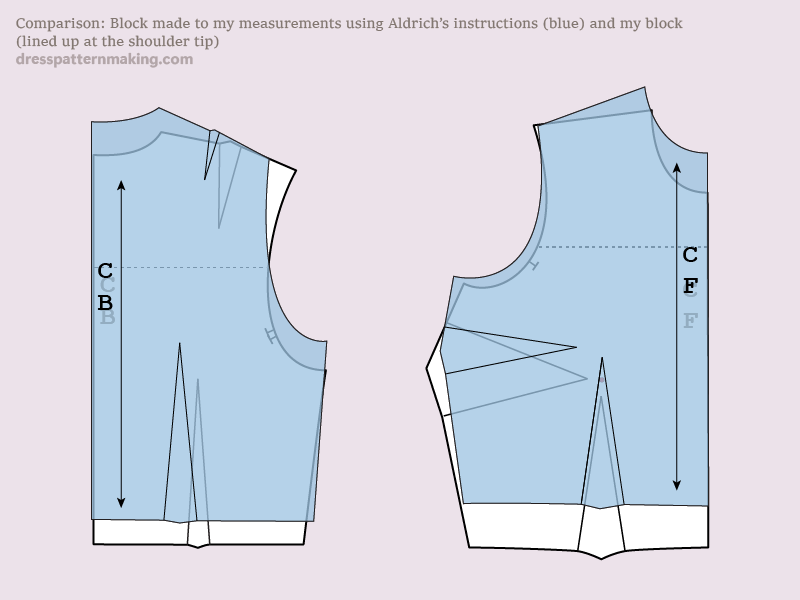
What did I do wrong?
Now I did understand that some level of adjustment would be required, but what I didn't understand was: if I was using MY measurements, why was it SO wrong?
Yes, I tried making adjustments to the toile, but I didn't understand what all the issues were: I'd try and fix one thing and it would create a problem elsewhere. I knew nothing about draping, and had no one to help me.
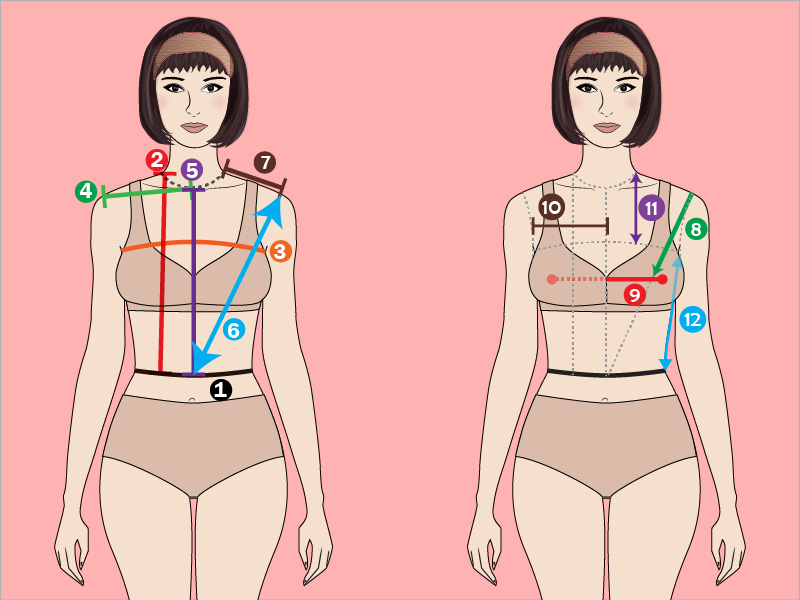
I kept thinking that I was making mistakes with my measurements, and kept going back over and over them, trying to figure out where the mistake was. This feeling was reinforced when I went back to my class and had a conversation with one other girl who had purchased the same textbook and had made her own block. When I asked her if her block fit well, she said "Of Course". When I mentioned my troubles, she said something along the lines of "If you had followed the directions correctly, and taken/used you measurements correctly, then of course it would fit. You must have done something wrong." (Important Context: She was a Fit Model for a major clothing label, and had the perfect (Australian) Size 10 figure.)
I kept on working on it until my spare vacation time was used up; I was going away on a two week trip during the TAFE September/October term break. I thought I would take up where I left off when I got back from Heron Island.
Life, and health problems get in the way
Unfortunately, I got really sick at the end of this vacation - some un-diagnosed auto-immune condition that was causing reactive arthritis and fluid around my heart. I was so sick I kept on ending up in hospital on and off. I somehow managed to finish the last term of patternmaking (I have no idea how, when I look back), but I certainly wasn't making any blocks. I had to take months off work, I had a relationship break-up, I had to move house, then move house again. Blocks were put on the back burner.
After a break, the next Patternmaking Subject
I didn't do the second year of Patternmaking in 2005, that was a year of Taking Things Easy. Then, in 2006, I felt well enough again and signed up for the second year patternmaking subject at TAFE: Block & Pattern Modification.
One day I was looking in the TAFE Bookshop and came across a textbook called Patternmaking for Fashion Design by Helen Joseph-Armstrong. This book had a different block making method and - you guessed it - I was so, so excited (again)! Continued in Another Method.
Click here to go back to the top of the page.
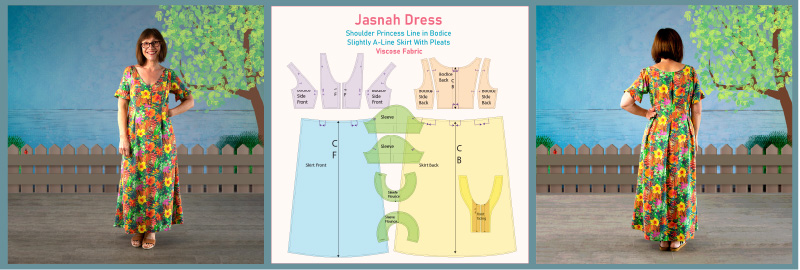
Part 5: Another Block Making Method
It seems to have all the answers...
So I found a new textbook, and it looked so exciting. Such a lot of patternmaking information, and a block-making method that looked much more detailed than the instructions by Aldrich. If there were some assumptions in Aldrich (and at that time I thought there was. but couldn't quite work it all out), I was certain there were none in THIS method.
Again, I approached my block making with excitement, thinking that THIS time I would have it.
More Disappointment
Yep, you got it. Nuh, it didn't happen.
I suspected as much before I even got to making the toile. The shape was really strange (though having said that, my actual block with the very square shoulders would strike a lot of people used to the standard shape as very strange, too).
The Block that I made
Here's are a couple of images that will show my problem: In the first image is the Armstrong block that I made, with my measurements. It sure does look odd!
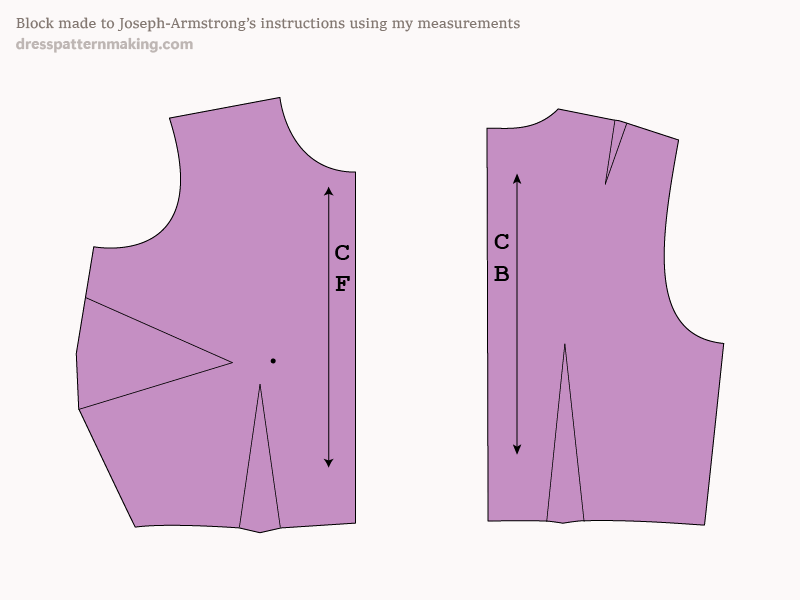
(I later worked out why it looked so odd. In the edition of the textbook I was using, Helen Armstrong's system consisted of using a 'strap' measurement that was in effect trying to place the armhole depth. In the instructions the 'body strap' measurement was used instead of the 'body strap plus ease'.. For me at least, this created a huge problem. In the next edition of her book the 'strap' meausurement was removed and was replaced by some other way off determining the armhole depth.
My final block compared to that block
In the image below, my block is in white on top of that purple Armstrong block; where they overlap is a light purple. While the Bodice Back is actually correct (yay!), the Front is way out!
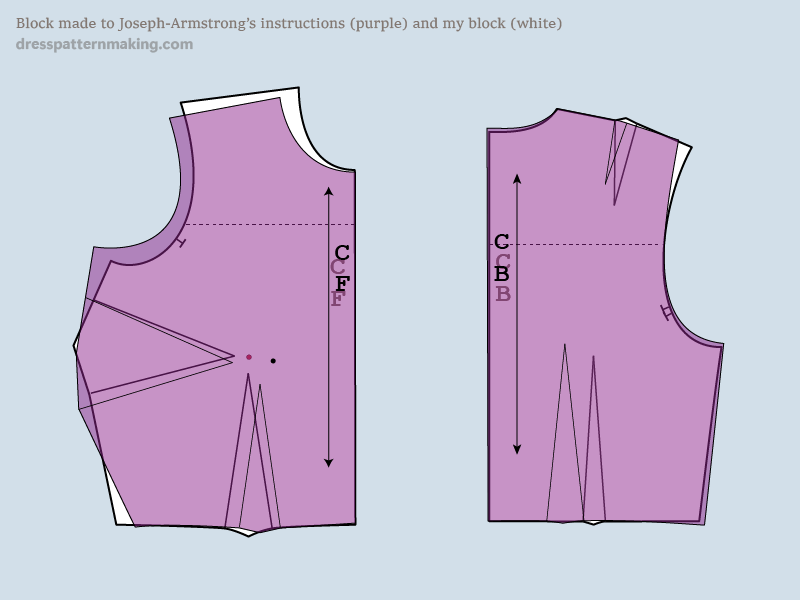
It's too wide across the shoulder, making the neck too big, the armhole it too high and too big, making the armhole gape, and the bust is wrong. (Again this is given my hindsight. I didn't know what the problems were at the time!).
I figured that the strap measurement was wrong, but couldn't figure out what it should be (the strap measurement, and no, not because the measurement was wrong!). I tried fitting the toile then making the adjustments to the pattern. I got something that was somewhere in the right ballpark, but every time I'd try to make a different pattern I'd have problems.
It was from about this point onward that I felt like I didn't want JUST to have a block that fit. What I wanted just as much was to understand what I was missing, what was going wrong. I was determined to get that, to be able to translate that 2D pattern to a 3D figure in my head, and understand all the issues with measurements and block making instructions. I did continue making patterns and some clothes, but I would stick to some basic summer dresses (which was the main thing I was after really) until I was absolutely sure of my bodice block.
It was at this time I decided that I would not stress about it anymore; it would be a ten-year-plan. In ten years I would be making my own clothes. I would pursue it on and off, as I had already done, and plug away at it, again and again, until I got it. And I had an idea: Although I was determined to figure out the perky problems with the block making instructions, why not have a well-fitting block in the meantime. Why not outsource it?
Click here to go back to the top of the page.
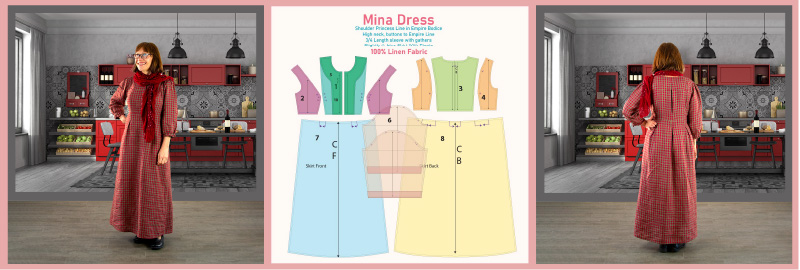
Part 6: Outsourcing
To a Dressmaker for HELP!
So... this was my thinking.....
Although I was determined to understand why block making instructions didn't end up fitting me when I used my measurements, this might take me some time. Maybe a few more years.
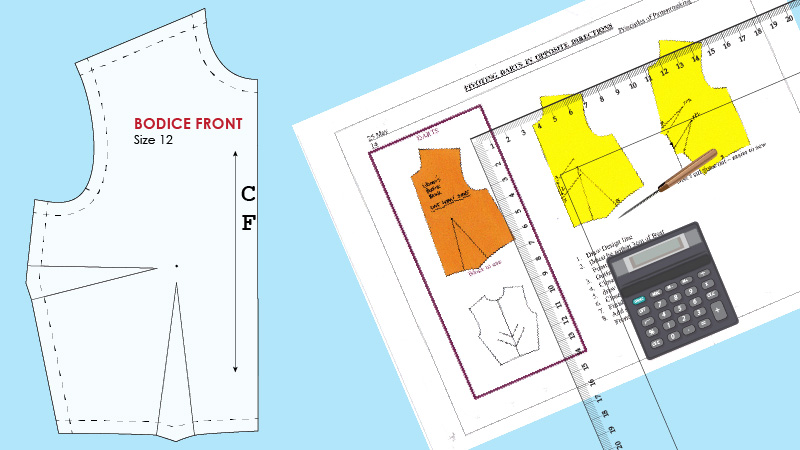
In the meantime, I sure would like to have a Bodice Block set that fitted perfectly (or as perfectly as possible) so I could finally put my patternmaking knowledge into action, and make some clothes!
So surely I could find someone..... like a dressmaker... to make me a block.
Such a good idea!!
Even more disappointment
Yep. No. Didn't work.
I paid $100 or $120 - I can't remember exactly, in was late 2007 or early 2008. I phoned a few dressmakers asking if they could make me a Bodice Block set. A couple said yes, I chose one fairly near work and home. Went to her and got measured. She made a toile and I went back for a fitting. The toile (before she pinned it) was way, way out. (As had been the case with all the blocks made for my figure with the block making directions I had used). But she seemed confident, she did the pinning and said she'd make the changes to the block. She'd call me when it was ready. (No second fitting/toile).
She called me and said the Bodice Block was finished, come and pick it up. I went to pick up the block - it made from dot/cross paper - and it consisted of just Front & Back, no sleeve - but that is what I asked for. It had sleeve allowance (which I then cut off), but I was surprised it had no dart in the back sleeve. You can see the block compared to mine in the image below. My block is in white, the dressmaker's block in pink.
The first image is the actual block she made, with one dart. In the second image, I have pivoted most of the waist dart and made the waist level to more easily compare with my two-dart block.
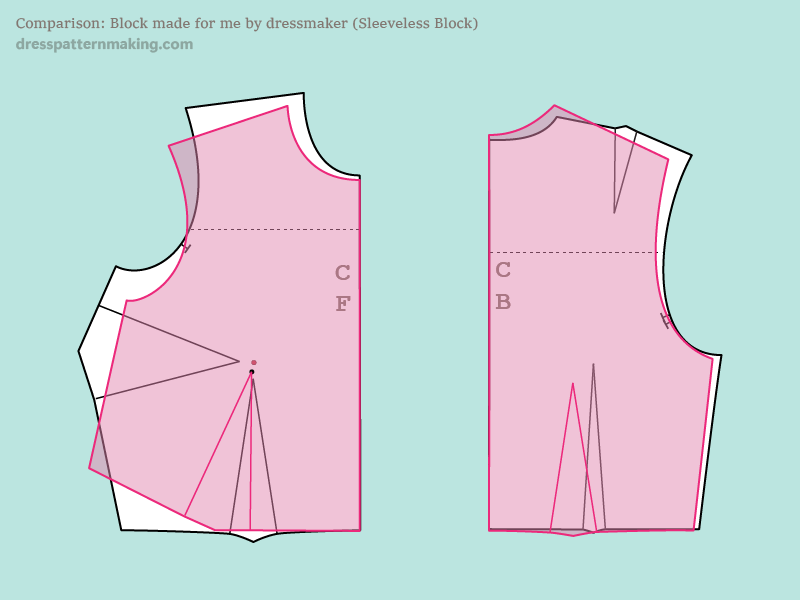
Below I have placed the blocks on top of each in a different way to show how how the garment would sit on my body - i.e. the shoulder tips are lined up.
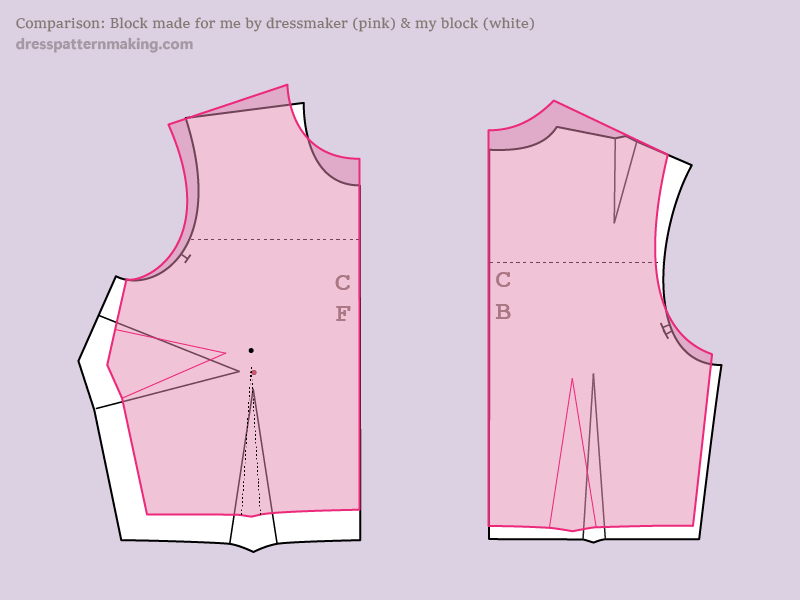
Excitement had yet again turned into disappointment.
Why didn't I go back? At the time I was having the toile fitted I was a having a bit of a flare-up of my auto-immune condition, (I was sick both late 2007 and early 2008, can't remember which one of those times I visited the dressmaker), and shortly afterwards I was back in hospital for a while. Straight after a flare-up, I had no energy or brain-space for thing like patternmaking - I concentrated on getting well again. It was a few months (maybe five or six) before I got around to making a toile from that block. Then I felt it was too late to go back to the dressmaker and complain.
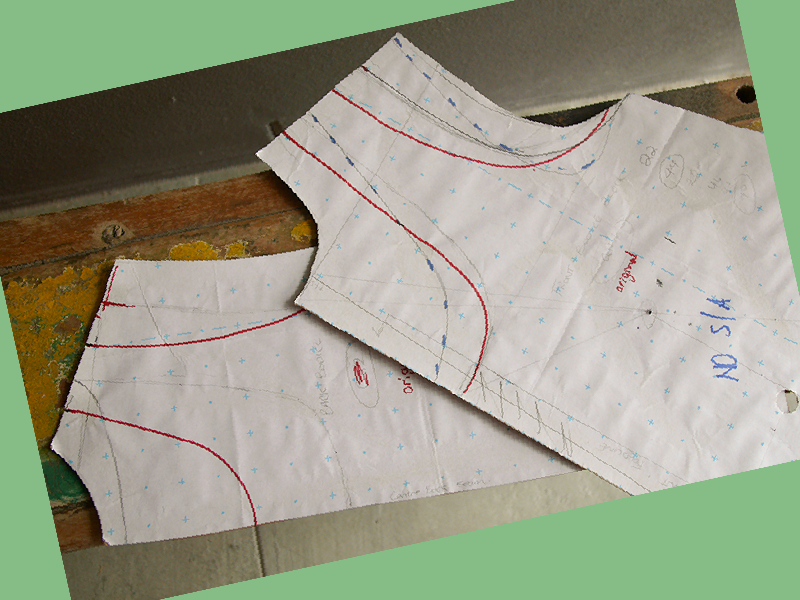
Note: I was a couple of kilograms lighter than usual when this block was made, which was why it is a bit narrower. However, while I may have been a bit smaller in the bust than usual, this block doesn't have any large bust adjustment at all.
Where from here?
So.. onward and onward. Two steps forward, one step backwards. Sometimes one step forward, two steps back. Not necessarily upwards. Whatever. Onward and onward. Can't give up now. Did I say ten-year plan? Yep, I sure was going to need those ten years.
Then I had a light bulb moment. I remembered... Michelle had done a ten week Community College Course where they made their own block set - including pants (I hadn't yet bothered with pants, I thought if I couldn't get the Bodice Block to work, I'd have no chance in hell with Pants!).
Yep, back to being excited! What a good idea!
So I signed up for a Community College course, which is the next part of the story.
Click here to go back to the top of the page.
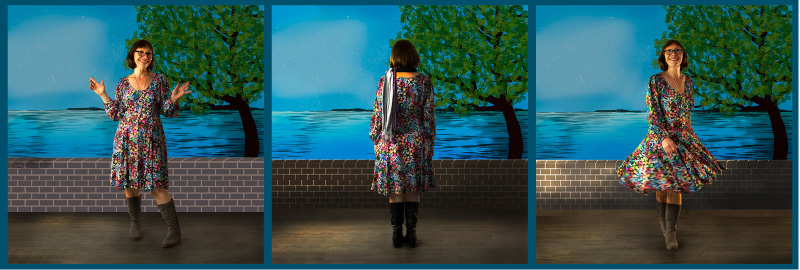
Part 7: Community College Block Making Course
The original course I was supposed to do - the course that my friend friend Michelle did. The course that Michelle mentioned in that conversation that was the first step in my patternmaking odyssey. Michelle had made her custom block set through a Community Collage course; at the time I had not taken that in and ended up signing up for a TAFE course that was for people working in the fashion industry.
This whole point of this course, unlike the TAFE course, was for each person in the class to make their own set of custom blocks.After all the things I tried, after all my efforts... This wasn't going to go wrong.

I kept an eye out for Community College classes that offered Block Making courses for patternmaking. I soon found one; in a suburb some distance away so not that convenient. It meant driving there in peak hour traffic in the evening and then driving home in the dark. Which was stressful for me in Sydney traffic. Very, very, stressful - and even more so after the second class, when I saw a young woman hit by a car where I was stopped at the traffic lights. It affected me badly and I dreaded driving to and from my patternmaking class so much that I often felt physically ill.
But I was determined.
I was also not excited. Relieved perhaps, that I would finally end up with my own custom blocks that fit well.
I was also determined to make sure
To make sure... I called the teacher and talked to her. I told her that I had patternmaking knowledge and that I had tried various times to make blocks. I told her that I really didn't want to pay the $300 or so for the ten-week course if I wasn't going to get a well-fitting block out of it.
She assured me - she promised me - that I would.
So I paid the money, and I attended the classes, and I made a full block set. Making toiles to check the fit was part of the class tasks, but there just wasn't the time to make the pants toile, so that idea was dropped a few weeks into the course - when we could see there was no way we were getting there.
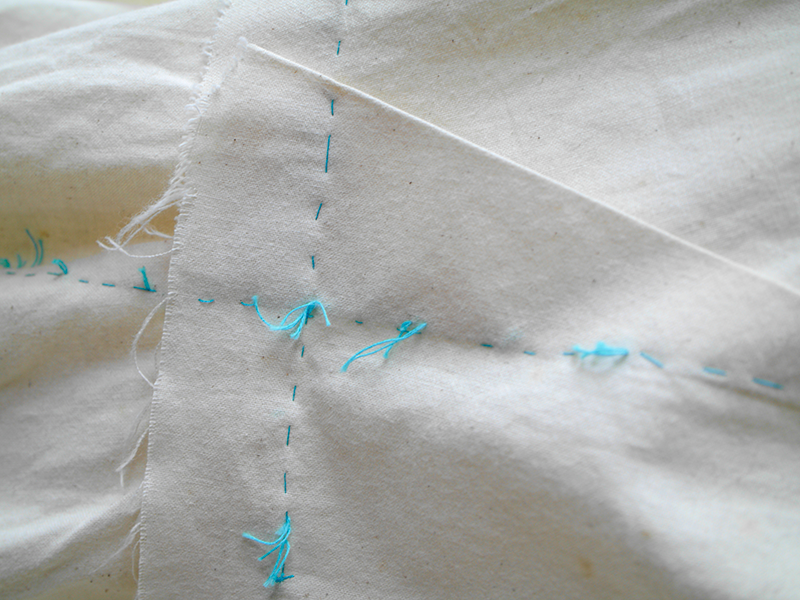
The time constraint factor was compounded by the fact that the teacher insisted we do everything with hand stitching. What this meant was we had to trace the block onto calico with chalk, then mark the stitching line with tufts of thread all around the block, before we had to hand stitch the toile together. The was no option of machine sewing. She was extremely adamant on that! It took a long time as none of us was used to hand-stitching. Although we should have done at home, most people found left it to class-time and it took up an entire class (or more) to do the sewing. (If I could have machine stitched it at home it would have been done in half an hour!)
It meant that we were rushed in the last two classes to get it finished and get any changes made if there were any fitting issues. The teacher had to look at each individual with their toiles on, then mark changes that were needed onto their blocks.
A mistake I couldn't undo....?
Also... there was a bigger issue at play. I made an unwitting mistake and paid for it.
The instructions for this method were a bit harder to understand and follow than other methods I had used. Having said that, given all the blocks I had tried to make, I could follow the directions fairly easily. I would get the portion we were doing finished in a quarter of the time others did. Then I sat there and waited for the teacher to come and check what I was doing. (She checked everyone's work at certain points). Given that there were 10 or 12 people in the class, there was always someone with their hand in the air, and those who needed help had to wait for ages.
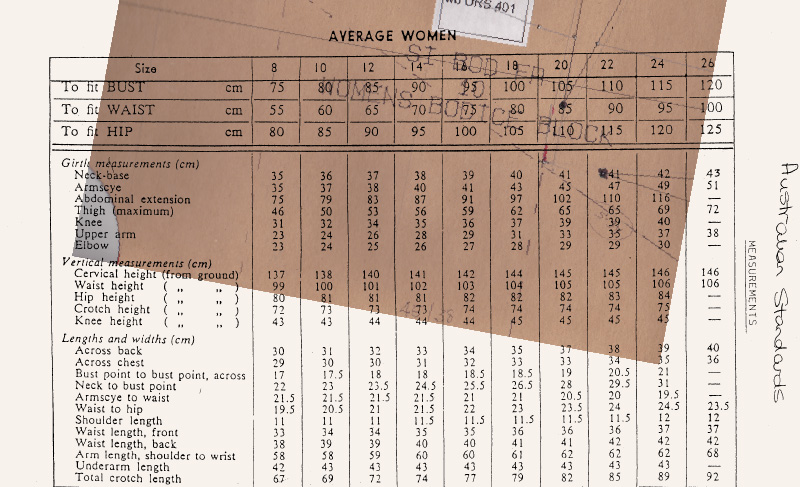
There were two people at each desk, and the girl next to me (who was waiting a long time for the teacher to come and answer her question) would ask me questions like "What does that mean?" (pointing to part of the instruction). And I answered her. I didn't think anything of it. In TAFE (and in Australia generally, I think), it is not seen as a bad thing for students to help each other. I really, really, really, didn't see what was happening until near the end of the second class when the teacher came and almost pounced on me and said in a very angry tone of voice: "Are YOU the teacher? Or am I? If you know everything, you shouldn't be in this class." (Note: She was Japanese, and as I had lived and worked in Japan for 4.5 years, I had met quite a few Japanese teachers with this mindset. I just had not realized she was like that until too late!).
After this incident she didn't seem to want to help me; if I actually had a question, or needed help, she wouldn't come and help me until she had helped everybody else. She often ignored my hand in the air. She made sniping remarks at me every so often. Or make a criticism (like "I stopped lending students my scissors as they kept dropping them on the floor"), then glare at me (I never borrowed her scissors!). She scowled every time she looked at me. It was so uncomfortable, I almost didn't finish the course; especially given my stress at the driving to and from the venue.
When it came to showing her that the toile did not fit (there was no large bust adjustment, none attempted), she made some minor changes to my block and said something like "That's the best you can hope for." I said that it pulled at the bust and the armhole was uncomfortable, and she looked right through me. I wasn't getting any help there!
The block was much, much better in the shoulder-slope department, but it still was NOT COMFORTABLE. I thought of writing a complaint to the college since she assured me I would have a block that fit. But I never did.
There are four images below. I've recreated both the first original block, made directly from the instructions, and also the final block, which was a result of the teacher making alterations/corrections to that blocks, based on our fitting toiles.
This first image shows the original block made (before alterations resulting from the toile fitting). It has one dart in the waist.
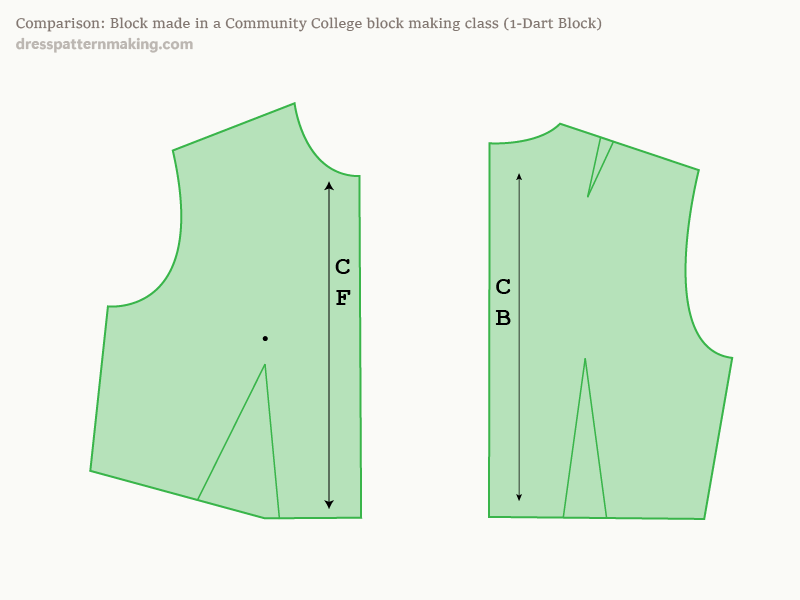
This next image compares that original block with my block, but I've made a two-dart block from the Community College block to more easily compare it mine.
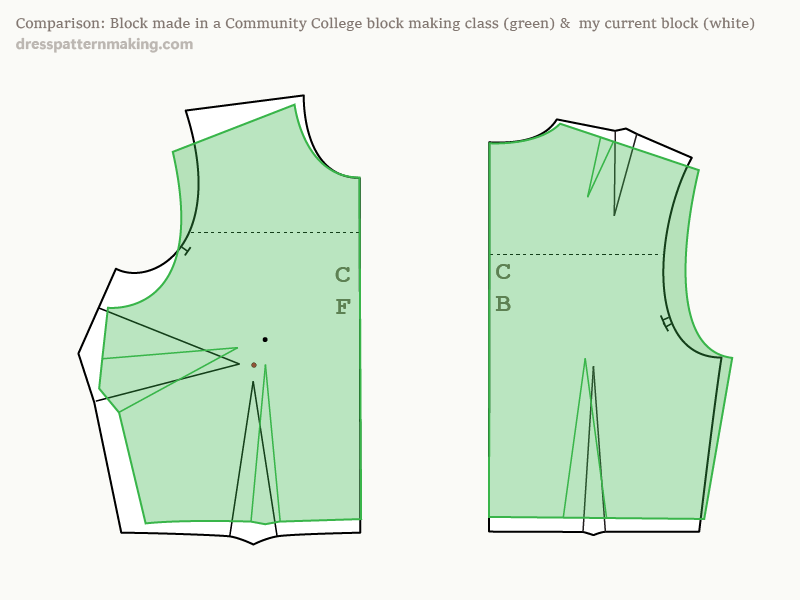
The third image shows the two Community College blocks: the original and the one with corrections made. The original is in green, the corrected one in orange (brownish where they overlap).
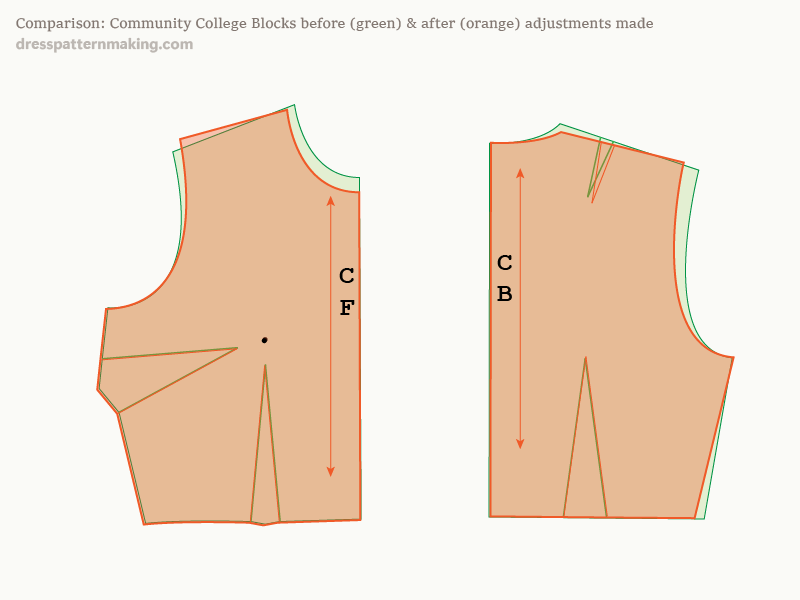
The teacher had checked the fitting my dress, and from that fitting had made a couple of corrections to my block. She made markings on the original block, and then I made the 'final' block according to those corrections. Those corrections were given to me in the final class.
This fourth image shows the final Community College block (orange), compared to my block (in white).
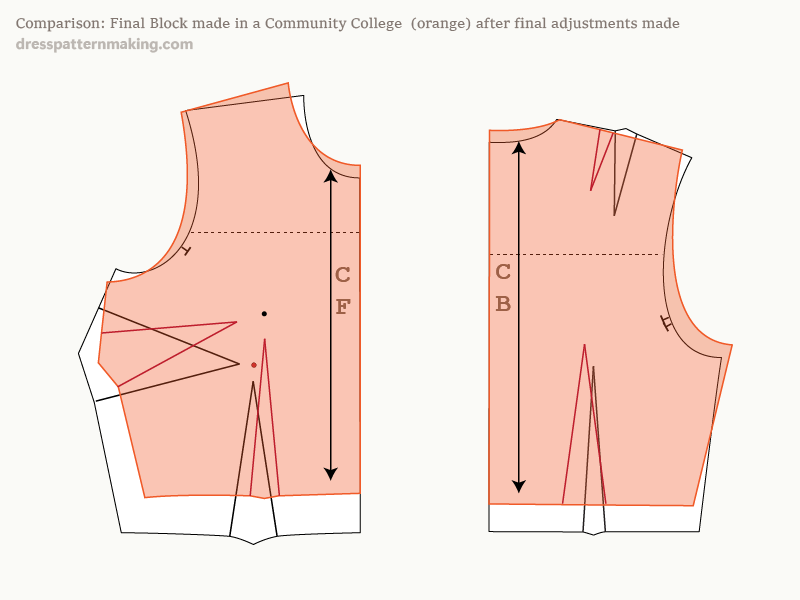
The shoulder slope on the BACK is correct, and the front has been fixed to some extent, but NOWHERE NEAR as much as necessary. And there is always the bust-cup; no adjustment has been made there.
So no, it didn't fit very well at all. It was uncomfortable in the shoulder/neck area, and pulled across the bust and down from the armhole towards the bust.
Yep... soo... onwards to the next setback, an Esmod course.
Click here to go back to the top of the page.
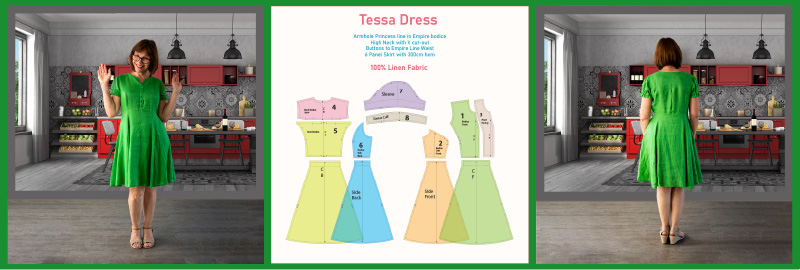
Part 8: Esmod Block Making Course
Money straight down the drain.
This one won't take long.
I saw an advertisement for the Esmod school of patternmaking in 2009. They had lots of short night courses. It was really close to work and not that far from home. Very convenient, wouldn't take long to get there or home....
No excitement, no sense of relief. A sense of impending doom, maybe. How many times had I thought "Things Can't Possibly Go Wrong Again!"
The first course I signed up for we were going to make our own set of blocks, and toiles from the blocks. I talked to the teacher. Yep, we would make blocks that fit. He would work with me to make sure.
I paid $475, plus about $150 of the particular equipment they wanted us to buy, and went to two classes. We were just finishing off our Bodice Blocks and would soon make our toile.
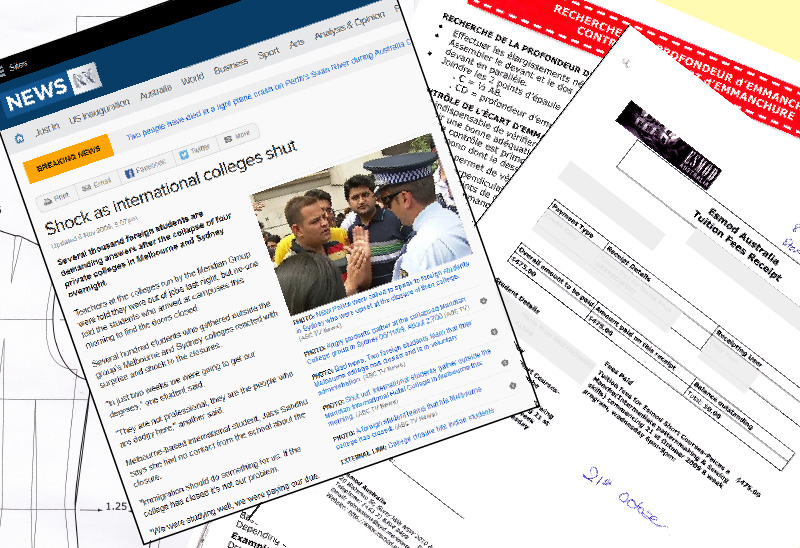
I turned up for the third class and there was a sign on the door. They had gone bust and gone into receivership. No hope of getting any money back; only full-time students who had paid thousands of dollars for full-time courses would get any recompense.
$475 down the drain (...I could still use the equipment).
Nonetheless, even that didn't stop me trying Yet Another Course.
Click here to go back to the top of the page.
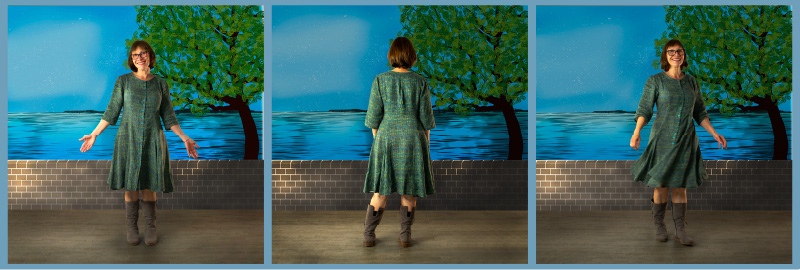
Part 9: Another Dressmaker, Another Class
Patternmaking Classes with a Dressmaker
My last attempt for assistance.
I found a dressmaker who offered classes in making personalized blocks and making patterns. Her shop was 15 minutes walk from where I lived. It was so convenient.
I wasn't excited, I couldn't let myself get excited anymore. I was wondering how this could go wrong too. It couldn't possibly go wrong. How could one person have so much bad luck? THIS TIME I would end up with a well-fitting block.
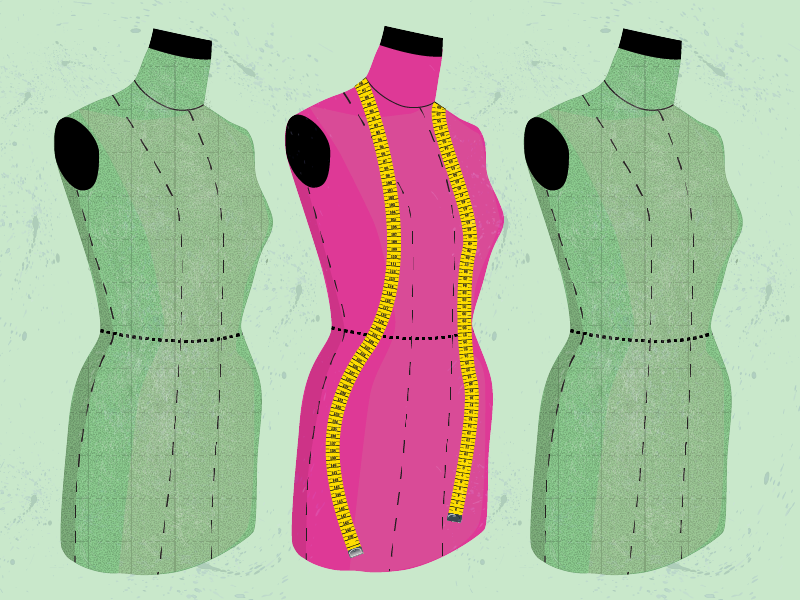
She was very talented, had examples of her work in photos and in her working rooms. She had lots of clients and made wonderful clothes.
She also had some mental health issues and was stalking someone. Really, I am not making this up. She was telling me all about her 'relationship' (which was nothing more than stalking someone who wasn't interested) from the first class. I was worried from the beginning.
I tried another class, but she would go from normal to aggressive in one second, and I didn't know what would upset her. I was scared of her by the third class and just stopped going.
I can't remember how much I paid for this course. I'm blocking it out.
From now on... Figure It Out By Myself or Not At All.
Click here to go back to the top of the page.
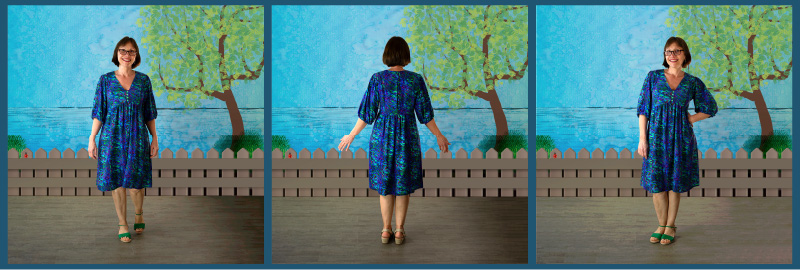
Part 10: On My Own
A custom fiberglass form.
I had tried to get help many times and had just thrown money away.
I decided getting a personalized body form - a custom-made replica of my body made with fiberglass - would be a better way to spend money.
Then I would just figure it all out.
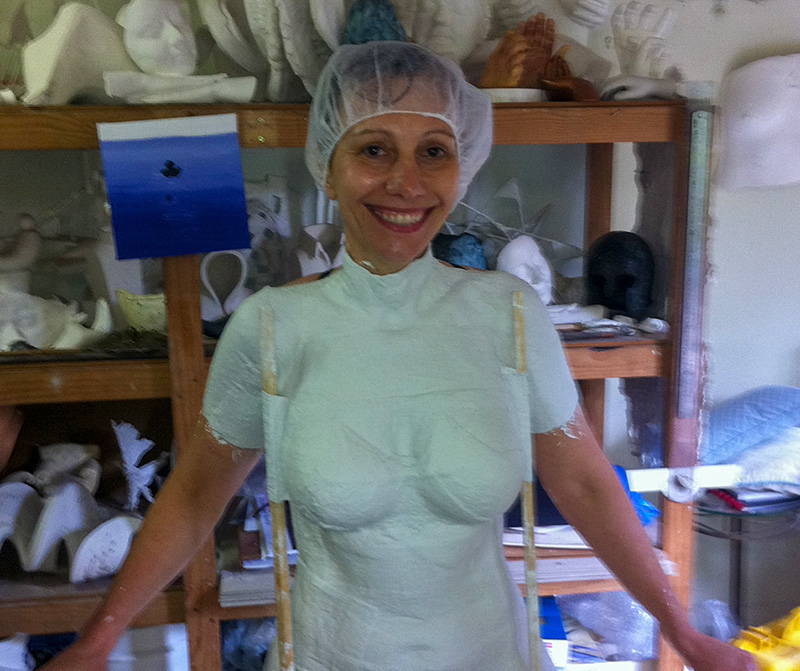
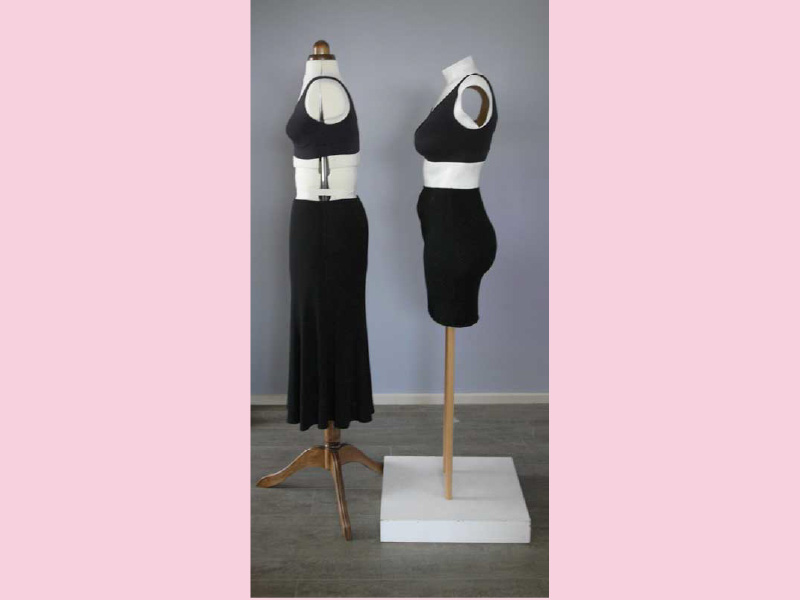
The body cast isn't ideal...
Although the body cast has it's problems, and it's not the best as a dressmaker's dummy for draping clothes, I am still so pleased I had it made. I could finally see my body from all directions from an outsider's perspective. It helped immeasurably to finally figure out what the issues were.
Recreating the wheel
So ...eventually, it all fell into place. I understood the disconnect between the block making instructions and the result as it related to my body.
I learned so much in the process I thought that I share the information; I hoped to save others who experienced some of the same problems from having to recreate the wheel.
I decided to write down everything I learned in the process to help out others who are having similar problems to mine.
And here's the website for that purpose. I have bodice making instructions which I hope will help a few other people achieve what I wanted to achieve, without as much angst. So they don't have to spend as much money as I did in the pursuit of a set of blocks that can be used to make comfortable, well-fitting clothes.
I hope to add a lot more information over the years.
Click here to go back to the top of the page.
